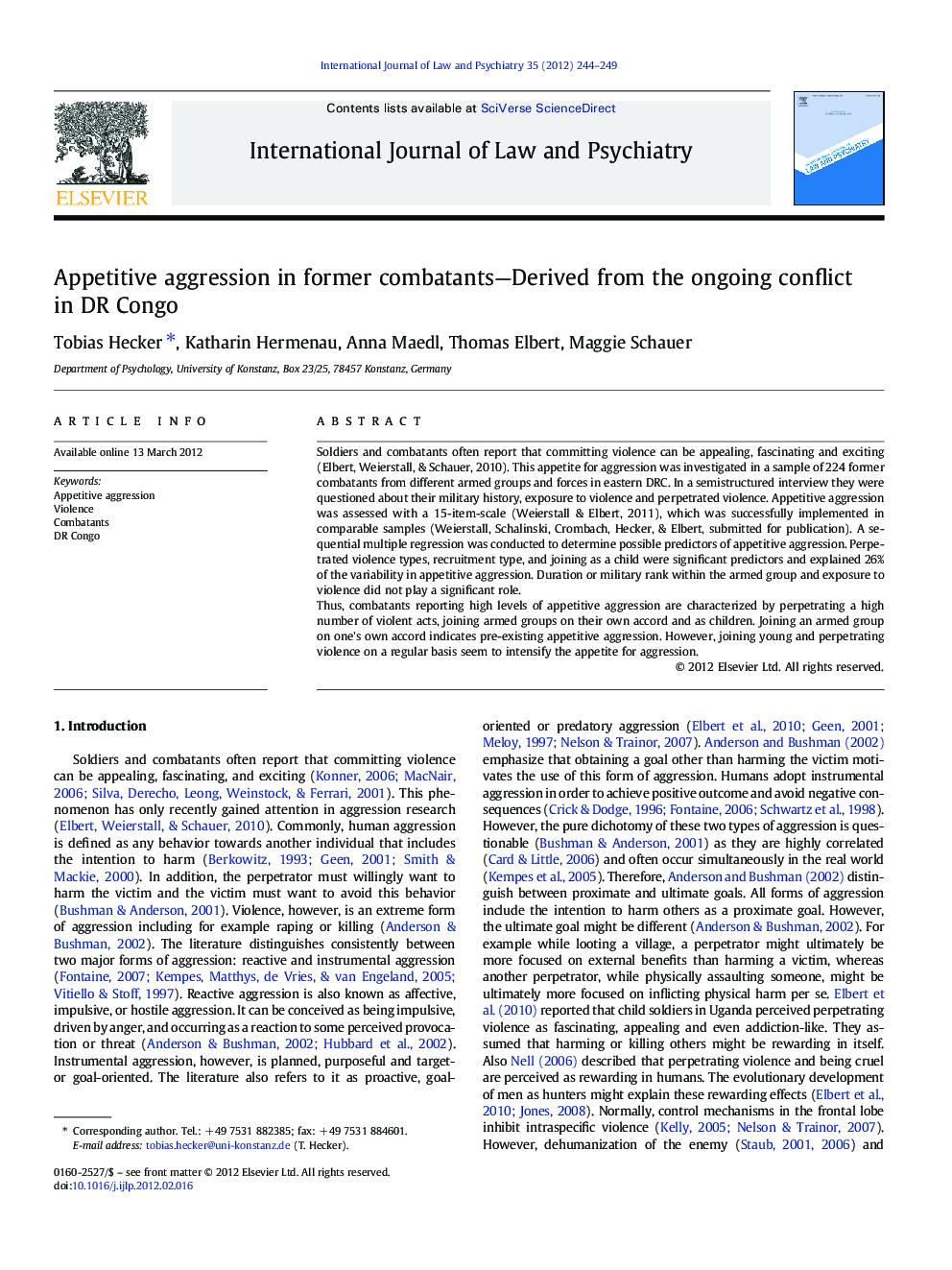| Article ID | Journal | Published Year | Pages | File Type |
|---|---|---|---|---|
| 100799 | International Journal of Law and Psychiatry | 2012 | 6 Pages |
Soldiers and combatants often report that committing violence can be appealing, fascinating and exciting (Elbert, Weierstall, & Schauer, 2010). This appetite for aggression was investigated in a sample of 224 former combatants from different armed groups and forces in eastern DRC. In a semistructured interview they were questioned about their military history, exposure to violence and perpetrated violence. Appetitive aggression was assessed with a 15-item-scale (Weierstall & Elbert, 2011), which was successfully implemented in comparable samples (Weierstall, Schalinski, Crombach, Hecker, & Elbert, submitted for publication). A sequential multiple regression was conducted to determine possible predictors of appetitive aggression. Perpetrated violence types, recruitment type, and joining as a child were significant predictors and explained 26% of the variability in appetitive aggression. Duration or military rank within the armed group and exposure to violence did not play a significant role.Thus, combatants reporting high levels of appetitive aggression are characterized by perpetrating a high number of violent acts, joining armed groups on their own accord and as children. Joining an armed group on one's own accord indicates pre-existing appetitive aggression. However, joining young and perpetrating violence on a regular basis seem to intensify the appetite for aggression.
